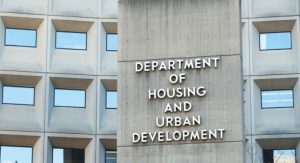 A new announcement by U.S. Department of Housing and Urban Development (HUD) Secretary Dr. Benjamin Carson revealed an array of new flexibilities states and local government can use their Community Development Block Grant (CDBG-CV) funds, as well as other federal funds, to pay for. This specific grant, which was appropriated by the CARES Act, was specifically targeted to aid communities in surviving and recovering amid the coronavirus outbreak.
A new announcement by U.S. Department of Housing and Urban Development (HUD) Secretary Dr. Benjamin Carson revealed an array of new flexibilities states and local government can use their Community Development Block Grant (CDBG-CV) funds, as well as other federal funds, to pay for. This specific grant, which was appropriated by the CARES Act, was specifically targeted to aid communities in surviving and recovering amid the coronavirus outbreak.
This announcement is a great boon for Americans as it offers much more flexibility in determining how these funds can be utilized in each individual and unique community. Currently, HUD has provided the nation with over $3 billion in CDBG-CV funds in an effort to support communities as they combat the spread of COVID-19, and deal with the resulting economic strain that has come along with it (among myriad other complications and hardships).
The “other federal funds” mentioned above regards the allowance that HUD is now providing, allowing flexibility to communities that desire to spend their existing, non-CARES Act federal dollars toward coronavirus recovery efforts as well.
In his official announcement, Secretary Carson stated the reasonings for this move: “As communities recover from the impacts of the coronavirus outbreak, HUD is providing States and local units of governments with the flexibility they need to effectively target funds to those efforts that need it most. In combatting the novel coronavirus, we have to be responsive to challenges as they arise.”
The main highlights of the official announcement regarding these newly available flexibilities for use of their CDBG-CV funds include the fact that states may carry out activities directly or pass funds through to local governments in both rural and urban areas throughout the state. (Some funds must be set aside for rural areas.)
Also noteworthy is the fact that the rules regarding economic development were updated and streamlined. This was done in order to enable grantees to move more swiftly to offer aid to small businesses in particular. A final allowance that is key is the provision for emergency payments to be offered to a provider or landlord on behalf of a family or individual. There are however limitations for this allowance (usually limited to 90 days, but may extend for up to six months).

 DSNews The homepage of the servicing industry
DSNews The homepage of the servicing industry










